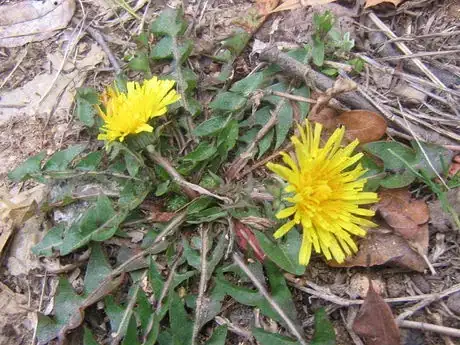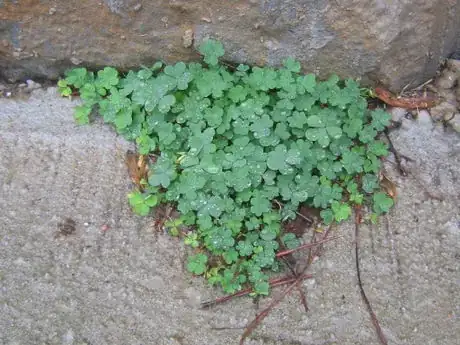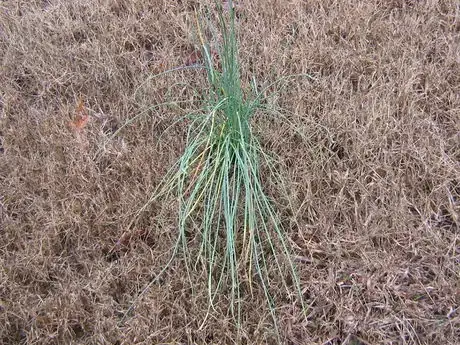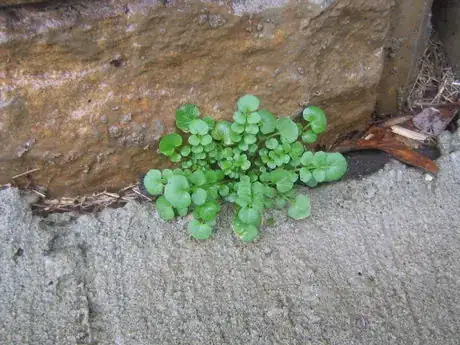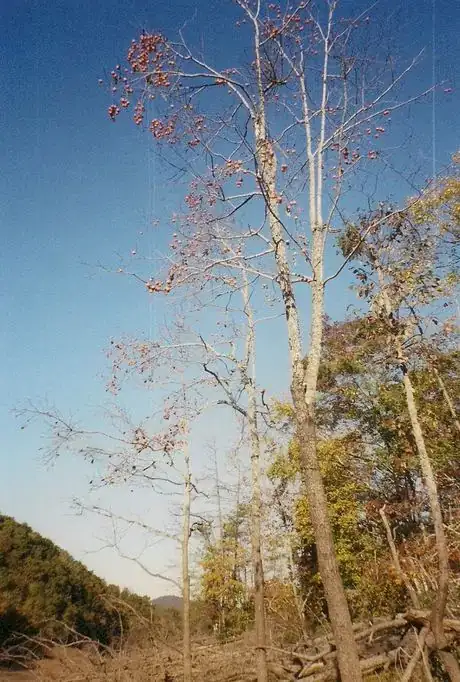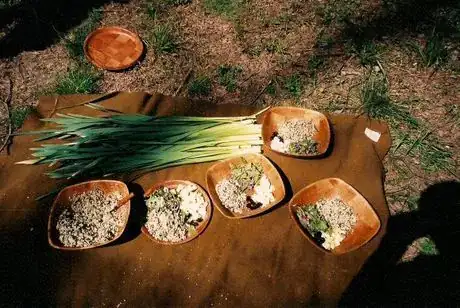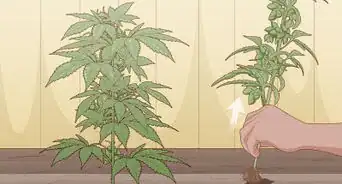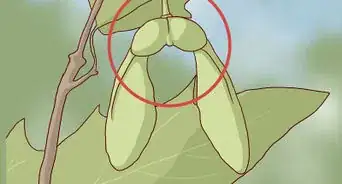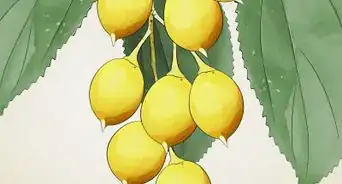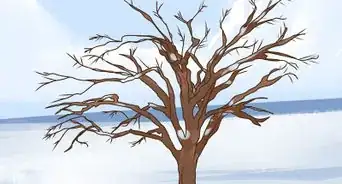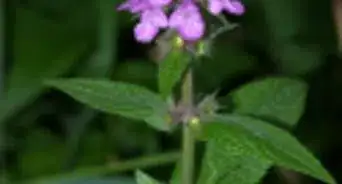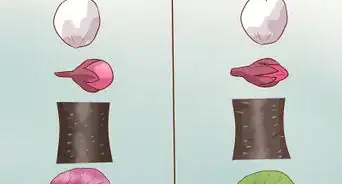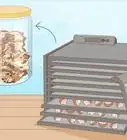wikiHow is a “wiki,” similar to Wikipedia, which means that many of our articles are co-written by multiple authors. To create this article, 45 people, some anonymous, worked to edit and improve it over time.
There are 18 references cited in this article, which can be found at the bottom of the page.
This article has been viewed 476,316 times.
Learn more...
Please double check all of these plants using other websites before consumption. Wild edible plants are everywhere you turn. Not only it is free food, but eating wild plants is a huge stride toward wilderness self-sufficiency. Once you know where to look and how to prepare plants you find in the wild, you'll be well prepared whether you're planning on surviving on free greens or you just want to try some new flavors next time you go camping. Be careful, though: eating the wrong plant could be fatal.
Steps
-
1Know where the best food is, depending on where you live. Keep in mind that if you live in a humid region, the majority of wild food will be in the sun - whether clearing or 'edge'. In a dry region, such as the Southwest of the USA, most of the wild food will be near water.
-
2Pick up a local plant guidebook. Get guides to the most common edible plants in your area, typically referred to as "weeds." Learn the top 20 or 25 and try to memorize them — they might come in handy later.Advertisement
-
3Start with the number-one habitat for wild edible plants — your lawn. Any place that is regularly cleared is potentially loaded with weeds such as dandelion, chickweed, plantain, wild onion, violets, wood sorrel, henbit, clover, dead-nettle and sow thistle — all of which are 100% edible. Some of these may be called something different where you live or are foraging for food.[1]
- Do not start with grass, as not all grass is edible (for example, bamboo contains cyanogenic glycosides which your body metabolizes into hydrogen cyanide). (although it is not advisable for those with a weak stomach) Anything under 6" is easy to chew and digest. The flavor ranges from intensely sweet to mild to bitter - anyone who's tasted a shot of wheatgrass knows just how sweet grass can be. Grass that's over 6" can either be chewed for juice and spit out, or run through a manual wheatgrass juicer for a healthy shot. Many grasses have edible seeds as well but it's better to learn to identify a specific plant rather than learn iffy tips.
-
4Visit other areas that are regularly cleared. Try roadsides (note warning below), fields, parks, and so on. They will also have tons of edible plants. Chickweed can be picked by the bucketful. Here's what to look for:
- Dandelion (taraxacum officinale):[2] The young unfolding greens in the center are great raw. The entire plant can be steamed. The flower is the best part. Pick it off the stem, and with your fingers pinch off the green base of the flower, so there's no white sap (the sap is very bitter). You're left with a sweet, meaty, filling wild food that can be found in incredible abundance. Also, you can throw a few of them into a pot to boil some dandelion tea.
- Chickweed (stellaria media):[3] The entire plant can be eaten raw. It has a sweet, grassy flavor. If you want to avoid the stems, and eat mostly the new growth, pluck off the tops and eat those.
- Wood Sorrel (oxalis spp):[4] The whole plant is great raw - it has a nice acid flavor, refreshing. The flowers of the cosmopolitan weeds are yellow, but many varieties grow in the wild with pinkish flowers. If you eat it, try the stem, but not the red part as it and the leaves are bitter. This is a plant extremely common not only in lawns and cleared areas, but also deep in the wilderness. It should not be consumed in great quantity as it contains relatively high levels of oxalic acid, which, while is vital for humans, may cause the gastrointestinal upset or illness when consumed in large amounts.
- Henbit (lamium amplexicaule):[5] Another plant entirely edible raw. It's a Lamium, a very mild mint. Like chickweed, it has a sweet, grassy flavor - pluck off the tops to avoid the stems. This plant will form huge carpets in places, very early in the year, with an understory of chickweed beneath it.
- Dead-nettle (lamium purpureum):[6] Another Lamium, just like henbit. It's eaten the same way - and will also form huge carpets covering the ground, especially in spring.
- Plantain (plantago lanceolata):[7] Young leaves in the center are good raw - have a slight salty flavor. There's both a common and an English plantain, that are very similar.
- Sow thistle (sonchus spp):[8] The young leaves are decent - treat it like dandelion, and try to avoid the bitter latex sap. Sow thistle has excellent yellow flowers very similar to dandelion, yet even better, that's prepared the same way and eaten raw. Unlike dandelion, sow thistle has an upright stalk and a more prickly-looking thistle-like appearance.
- Wild onion (allium spp):[9] Very common in areas that are mowed. A very mild onion that is excellent raw. Harvest bunches of it and use it just like scallions.
- Cress (cardamine spp):[10] This is one of the many wild plants in the mustard family common in cities. When young, the leaves are excellent raw, with a mild mustard flavor. As they get older the full plants can be steamed, just as you would prepare mustard greens at home.
-
5Look for berries on ornamental shrubs, such as this silverberry.[11] Ebbing's silverberry is frequently planted in cities as bushes and hedges - but it will escape into any disturbed habitat and form thickets. The stems, foliage, and berries are all speckled with silver. The red berries are excellent when fully ripe.
-
6Look for berries on trees. Even in the dead of winter, such as on this laurelcherry. Like most wild cherries, these have a long ripening process and aren't fully ripe until the fruit starts to soften and shrivel.
-
7Check out ornamental trees. These are planted for their showy flowers — those flowers can lead to fruit, such as cherries or crab apples or plums. They may be small, but can be very tasty.
-
8Look for nuts beneath trees. Walnuts and hickory nuts can be smashed open with a rock and the edible flesh picked out. Fresh nuts are wet and filling and easy to digest, with a lot of flavor. Acorns are abundant beneath oaks — if the oak has round-lobed leaves, the acorns will need minimal to no processing. Some white oak acorns will have no tannin at all. And keep in mind you get used to it and stop noticing it after the first few — it's how pigeons eat so many acorns.[12]
-
9Find fruiting trees. Check roadsides (note warning below), forest edges, and beside water for fruiting trees. Fruit needs sun to ripen - there's not much fruit in deep woods. The 'edges' of any environment are the most productive - trees are fertilized and keep a moisture and humidity from the forest behind them, but have access to full sun at the edge of a clearing or waterway. This is where you will find fruit like persimmons, wild apples, mulberries, autumn olives, hackberries and so on. Below are persimmons.
-
10Look for plants that grow in wet areas. Search bodies of water for signs of cattail, bulrush, and watercress. Cattail typically needs an area of stagnant water to thrive, though it will grow in streamsides. Cattail can be in preposterous abundance in lakes and bays.[13] The shoots are wonderful raw, and the pollen in early summer tastes like cake flour. You can gather whole bags of it. Its pollen is so nutritious it's considered a "superfood."
-
11Nibble on safe flowers. Sample the flower petals of plants you know to be nonpoisonous. Flowers are often very mild to sweet and full of antioxidants. Some excellent blooms are daylilies, violets and honeysuckle. DO NOT EAT AZALEAS! Azaleas are deathly poisonous.[14]
- The base of flowers can be strong to bitter (and in the case of some, such as Wisteria, toxic) — it's better to break off petals and not eat the green material.
-
12Check out thorny brambles for food. Rose, blackberry, raspberry, and greenbriar are good examples. Rose has edible hips (the common weedy thicket-forming multiflora rose is the best - the hip is small and tangy), blackberry/raspberry has berries, and greenbriar shoots and tendrils, as well as berries that are rather tasteless but still edible. Below is a multiflora rose.[15]
-
13Learn your vines so that you can distinguish grape. Wild grapes are found throughout the U.S. and are one of the best wild foods. There's a variety which you will see everywhere throughout the South of the US called "muscadine" — the grapes are thick-skinned and very large, with a flavor like bubble gum.[16] Wild grapes have both edible leaves and tendrils as well as fruit — the leaves can be steeped in apple cider vinegar and used to make dolmas.[17] Muscadine leaves are tougher and benefit from a week-long glass jar ferment. Grape vines also make very sturdy baskets.
-
14Find deciduous leaves. Try the deciduous leaves of trees like linden, sassafras, Boxelder, sourwood - all are excellent raw. Beech leaves are also highly edible when young, for the first 2 to 4 weeks. You can pull whole salads off the trees. Linden leaves are so large they can be used as tortillas.
-
15Pick the new growth off conifers in the spring.[18] The young green shoots at the tips of the branches are great raw - a pleasant acid taste. The male pollen cones on conifers are also edible - some are very sweet. And again, it's pollen - extremely nutritious. Many species of pine have edible nuts in the cones in late summer to fall.
Community Q&A
-
QuestionWhere can I get an edible-plant book?
 Community AnswerTry Amazon or a local camping store.
Community AnswerTry Amazon or a local camping store. -
QuestionDo you have some river camping survival tips?
 Community AnswerTest the water before drinking it. Don't drink salt water either, and if you're not sure about river water, then boil it to kill germs.
Community AnswerTest the water before drinking it. Don't drink salt water either, and if you're not sure about river water, then boil it to kill germs. -
QuestionWhat is the worst that could happen if I eat a non-edible plant?
 Community AnswerYou could die from eating certain toxic plants, although many would just make you very ill.
Community AnswerYou could die from eating certain toxic plants, although many would just make you very ill.
Warnings
- Avoid plants growing in areas that may have potentially been subjected to the dumping of toxic wastes.⧼thumbs_response⧽
- Especially if you live in an urban or high-traffic area, avoid plants growing immediately next to roadsides, or anything with a sticky blackish residue. This could be solidified air pollution!⧼thumbs_response⧽
- Almost the same is not the same. A plant with maple-like leaves is not a maple. A plant with a yellow bud is not always a primrose. It must be exactly the same to be safe.⧼thumbs_response⧽
- Avoid the carrot family if you're a novice, and you won't have any worries about being seriously poisoned by wild edible plants. Species like water hemlock and poison-hemlock can kill you. Harvesting plants like wild carrot are not worth the risk of confusing it with a deadly relative, unless you really know what you're doing.⧼thumbs_response⧽
- Don't try eating wild peas. Even though some can look very much like garden peas - most are poisonous. However, more advanced foragers can have lots of success with edible peas such as Pisum and Lathyrus.⧼thumbs_response⧽
References
- ↑ https://www.artofmanliness.com/articles/surviving-in-the-wild-19-common-edible-plants/
- ↑ https://www.moneycrashers.com/eating-dandelions-health-benefits-leaves-greens-roots-flowers/
- ↑ https://www.wildedible.com/chickweed
- ↑ https://www.wildedible.com/wild-food-guide/wood-sorrel
- ↑ https://www.ediblewildfood.com/henbit.aspx
- ↑ https://www.ediblewildfood.com/purple-deadnettle.aspx
- ↑ https://www.wildedible.com/wild-food-guide/plantain
- ↑ https://www.ediblewildfood.com/sow-thistle.aspx
- ↑ https://www.survival-manual.com/edible-plants/wild-onions.php
- ↑ http://www.cpbr.gov.au/apu/plants/cardamin.html
- ↑ http://www.aihd.ku.edu/foods/silverberry.html
- ↑ https://www.woodlandtrust.org.uk/blog/2016/10/edible-acorns/
- ↑ https://www.growforagecookferment.com/foraging-for-cattails/
- ↑ https://www.poison.org/articles/2015-mar/azaleas-and-rhododendrons
- ↑ http://eattheplanet.org/multiflora-rose-an-invasive-but-nutritious-wild-edible/
- ↑ https://www.npr.org/sections/thesalt/2017/09/26/551835327/muscadines-may-be-the-best-grapes-you-ve-never-tasted
- ↑ https://www.thekitchn.com/how-to-make-your-own-dolmas-94990
- ↑ https://www.wildernessawareness.org/articles/survival-food-plants-cattail-acorns-grasses-and-conifers
_674.webp)

